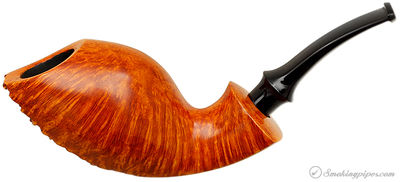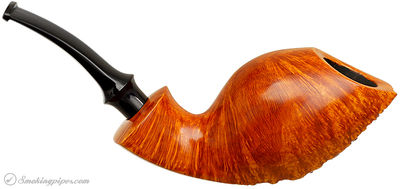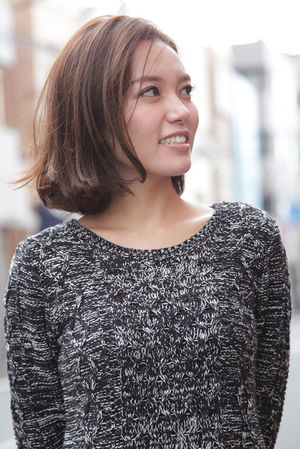Ikebana: Difference between revisions
No edit summary |
|||
| Line 3: | Line 3: | ||
<center> | <center> | ||
'''A Beautiful Tsuge | '''A Beautiful Tsuge Ikebana Freehand, Courtesy [http://www.smokingpipes.com/pipes/new/Tsuge-Ikebana/moreinfo.cfm?product_id=107413 Smokingpipes.com]''' | ||
<gallery widths=400 heights=250> | <gallery widths=400 heights=250> | ||
File:Ikibana1.jpg | File:Ikibana1.jpg | ||
Revision as of 02:06, 2 December 2013
Introduction
Tsuge's Ikebana line of pipes have sometimes been referred to as 'The Flowers of the Pipe World', which makes sense--the literal translation of Ikebana is living flowers, which refers to the high form of Japanese floral arrangement. The practice and presentation of an Ikebana arrangement is said to encourage silence, and an appreciation of nature that is sometimes overlooked in the rush of our busy lives. It is also said to encourage the appreciation of beauty in all art forms. For years the Tsuge brothers have entrusted the over site of their Ikebana line to Kazuhiro Fukuda.
A Beautiful Tsuge Ikebana Freehand, Courtesy Smokingpipes.com
Tsuge Ikebana's New Pipemaker
In November of 2013, a new and exciting pipe maker was announced as Fukuda's heir apparent. The following article by Sykes Wilford appears courtesy of smokingpipes.com
As a woman in her late 20s, Asami Kikuchi is something of a rarity in pipe making. Indeed, she's even more of a rarity in Japanese pipe making. There are just a handful of female high-grade pipe makers in the world and all of them, save Kikuchi, have been either the daughter or the spouse of a pipe maker. Kikuchi's path has been unusual, a serendipitous road to a career she never thought existed, let alone longed for, a few years ago.
In her fourth year at Tama Art University, one of Japan's most illustrious art schools, Kikuchi undertook an unusual project. Most of her fellow students worked on architectural projects or industrial design projects--chairs, tables and the like--or in more traditional, solely visual arts. Kikuchi became fascinated with wood. More specifically, she became captivated by the tactile experiences made possible through the creation of small wooden objects; their potential to soothe, stimulate, and delight. In an art school in Europe or the United States, this would seem particularly odd, but in Japan, with its history of highly artistic, small handcrafted goods, while it was still a little unusual, there was, at least, a framework for doing this sort of work. Kikuchi says that when she started the project, everyone from friends to professors was a bit bemused by the whole idea. It seriously deviated from the sorts of things art students did, but as she worked through the project, they came to understand.
In an interesting twist of fate, the supervising professor for that final art school project was a childhood friend of Kyozaburo (Sab) Tsuge's wife. A couple of years after she finished art school she was contacted by this professor because of the similarity in underlying idea between her final project and pipe making: both in wood and both highly tactile as well as visual. It didn't go anywhere for a little while, but when Kikuchi received an order for a number of her small wooden sculptures and needed access to a workshop to make them, she reached out to Tsuge and he offered her use of the Tsuge workshop in Asakusa after hours. And from there, she fell in love with the process of pipe making. It was as if she'd always wanted to make pipes, but waiting to discover that handmade pipes existed. It was the perfect fit for the sort of work she had always wanted to do.
Having completed the project for her client, she asked Tsuge if she could stay and learn to make pipes. Fukuda, primary carver for the Ikebana line for four decades, is in his seventies and while he's in great health and still remarkably productive, Sab Tsuge and others have been looking for someone to learn, supplement Fukuda's work, and, in time, guide the Ikebana line into the future. Sab Tsuge cautioned her that it wouldn't be easy, and then gladly welcomed her aboard.
According to Kikuchi, Fukuda is pretty old school. While not quite ‘Wax on, wax off’, the learning process involved a lot of watching, while Fukuda happily answered her questions. Fukuda, grounded in an older tradition of craftsmanship, treated it far more as a master-apprentice relationship than a teacher-student relationship. He had her do useful tasks that also got her accustomed to the machinery and the sorts of work that would be necessary for pipe making. And he set very high standards, quietly spurring her on towards better and better work.
She's been making pipes full-time with Tsuge for a little over a year now. Ryota, 'Our Man in Japan', Shimizu, and I first saw her work in December, 2012. We were immediately impressed and saw the enormous potential she had. Almost a year later, she's at a level where her work would fits perfectly in the Ikebana line. Stylistically, she gravitates to some different shapes from Fukuda, but the underlying work is just as sound. Of course, Sab Tsuge certainly thinks so: the Ikebana stamp is something of a company--and Tsuge family--treasure, not something to be applied lightly.
As Sab Tsuge said, "while she'd never encountered pipes, her work at university had such a remarkable affinity to pipes. When I saw the small sculptures Kikuchi had made, I immediately thought that she could make pipes."


